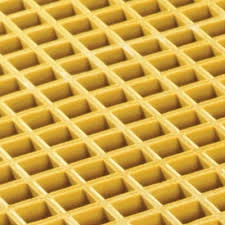loading...
- No. 9, Xingyuan South Street, Dongwaihuan Road, Zaoqiang County, Hengshui, Hebei, China
- admin@zjcomposites.com
- +86 15097380338
- Welcome to visit our website!
frp handrails
The Advantages of FRP Handrails Safety and Durability Combined
In today’s fast-paced world, ensuring safety in various environments, whether residential or commercial, has become more critical than ever. Among the myriad of safety solutions available, Fiber Reinforced Polymer (FRP) handrails have emerged as a popular choice. Combining strength, durability, and aesthetic appeal, FRP handrails are revolutionizing safety standards in many industries. This article explores the advantages of FRP handrails, highlighting their applications, benefits, and why they are becoming a preferred choice for many architects and builders.
What are FRP Handrails?
FRP is a composite material made from a polymer matrix reinforced with fibers, such as fiberglass. This unique composition offers a number of benefits that traditional materials, such as wood or metal, cannot provide. The versatility of FRP allows manufacturers to produce handrails in a variety of shapes, sizes, and colors, making it easier to integrate them into different architectural designs.
Strength and Durability
One of the most significant advantages of FRP handrails is their incredible strength-to-weight ratio. FRP is lightweight, making installation easy, yet it is exceptionally strong and resistant to impact. Unlike wood, which can warp, rot, or splinter over time, or metal, which can corrode, FRP retains its structural integrity over extended periods. This durability is particularly beneficial in harsh environments, such as coastal areas where saltwater can erode conventional materials. The longevity of FRP handrails helps reduce maintenance costs and the frequency of replacements, making them an economical choice in the long run.
Corrosion and Chemical Resistance
In many industrial settings, exposure to chemicals or corrosive elements is unavoidable. FRP handrails excel in these environments, as they are impervious to many acids, alkalis, and solvents. This chemical resistance is crucial for applications in chemical plants, wastewater treatment facilities, and food production areas, where contamination risk must be minimized. By using FRP handrails, businesses can ensure that their safety measures do not become compromised by environmental factors.
frp handrails

Aesthetic Versatility
FRP handrails also shine in terms of aesthetic versatility. Available in various colors and finishes, they can easily complement the look of any building or outdoor space. Additionally, the ability to mold FRP into various shapes opens up a wealth of design possibilities that traditional materials may not offer. This customization allows architects and designers to create visually appealing structures without sacrificing safety.
Non-Conductive Properties
One lesser-known benefit of FRP handrails is their non-conductive properties. Unlike metal handrails, which can pose electrical hazards, FRP is an excellent insulator, making it a safer choice for environments where electrical safety is paramount. This characteristic makes FRP handrails particularly suitable for facilities such as power plants, where avoiding electrical conductivity is essential.
Eco-Friendly Option
As we become increasingly aware of the need for sustainable choices, FRP handrails have emerged as an eco-friendly option. Made from recycled materials, they can contribute to lower carbon footprints compared to traditional materials. Furthermore, the longevity and reduced need for maintenance translate into less waste over time, aligning with global efforts towards sustainable development.
Conclusion
In conclusion, FRP handrails provide a multitude of benefits that make them an attractive option for ensuring safety in various environments. Their strength, durability, and resistance to corrosion make them ideal for both commercial and industrial applications. Additionally, their aesthetic versatility and non-conductive properties enhance their appeal, particularly in settings requiring high safety standards. As the demand for reliable and sustainable safety solutions continues to grow, FRP handrails are likely to gain even more popularity in the construction and design sectors. Investing in FRP handrails is not just a choice for safety; it is a strategic decision that combines long-term economic benefits with environmental responsibility.
-
Premium FRP Handrail for All ApplicationsNewsAug.29,2025
-
Low Maintenance FRP Mini Mesh Grating ProductsNewsAug.29,2025
-
Innovative FRP Square Tubes for Modern Industrial SolutionsNewsAug.29,2025
-
FRP Water Storage Tanks Wholesale Solutions for Bulk BuyersNewsAug.29,2025
-
FRP Molded Grating Solutions for Diverse Industrial ApplicationsNewsAug.29,2025
-
Construction Advancements Through FRP Pultruded ProfilesNewsAug.29,2025
-
Why Choose FRP Railings, Guardrails, and Handrail Systems?NewsAug.29,2025
